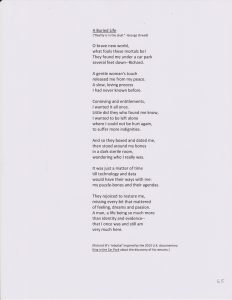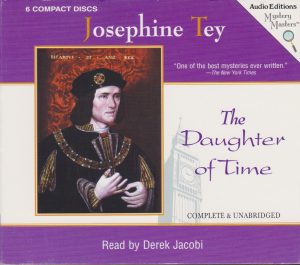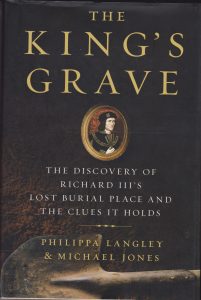My involvement with Richard III began in 1972 when I taught Josephine Tey’s 1951 detective novel, The Daughter of Time to a gr. 11 class. The book is about an English detective laid-up in hospital who reconstructs Richard’s reputation after much evidence of a Tudor defaming cover-up. It also deals with the timeless mystery of the Princes in the Tower. Derek Jacobi’s audiobook version below would be of interest to someone revisiting the book.
Later, in the mid-70s I would study Shakespeare’s tragedy and attend an over-the-top U of A student production of the play, complete with ‘blood’ splashing on the front row patrons in an opening scene! Even later in the ’80s, I would see Ron Moody as the crazy hunchback villain in a modern fascist version of Richard III. By this point, I had serious doubts about the stereotypical Shakespeare/Tudor versions of the much-maligned king.
Fast forward to 2013, and the book below and its arresting documentary about one woman’s successful search for the real king’s grave–a real-life detective story. Despite all the scientific evidence this quest produced, I was left wondering how much significant information it produced about the real man, who can never be fully known or understood.
Hence, the poem above with its Orwell epigraph suggesting that only the king would know what the reality and truths of his life experiences were, regardless of the quest’s curious human investigator and subsequent scientific/technological interventions and discoveries. (This reflects a more general personal belief, inspired by the work of ’60s psychiatrist-author R.D. Laing, that reality is basically subjectively experienced in a basic, built-in isolation with a built-in, attendant alienation; i.e., we can never fully know the interior life and experiences of others.)



